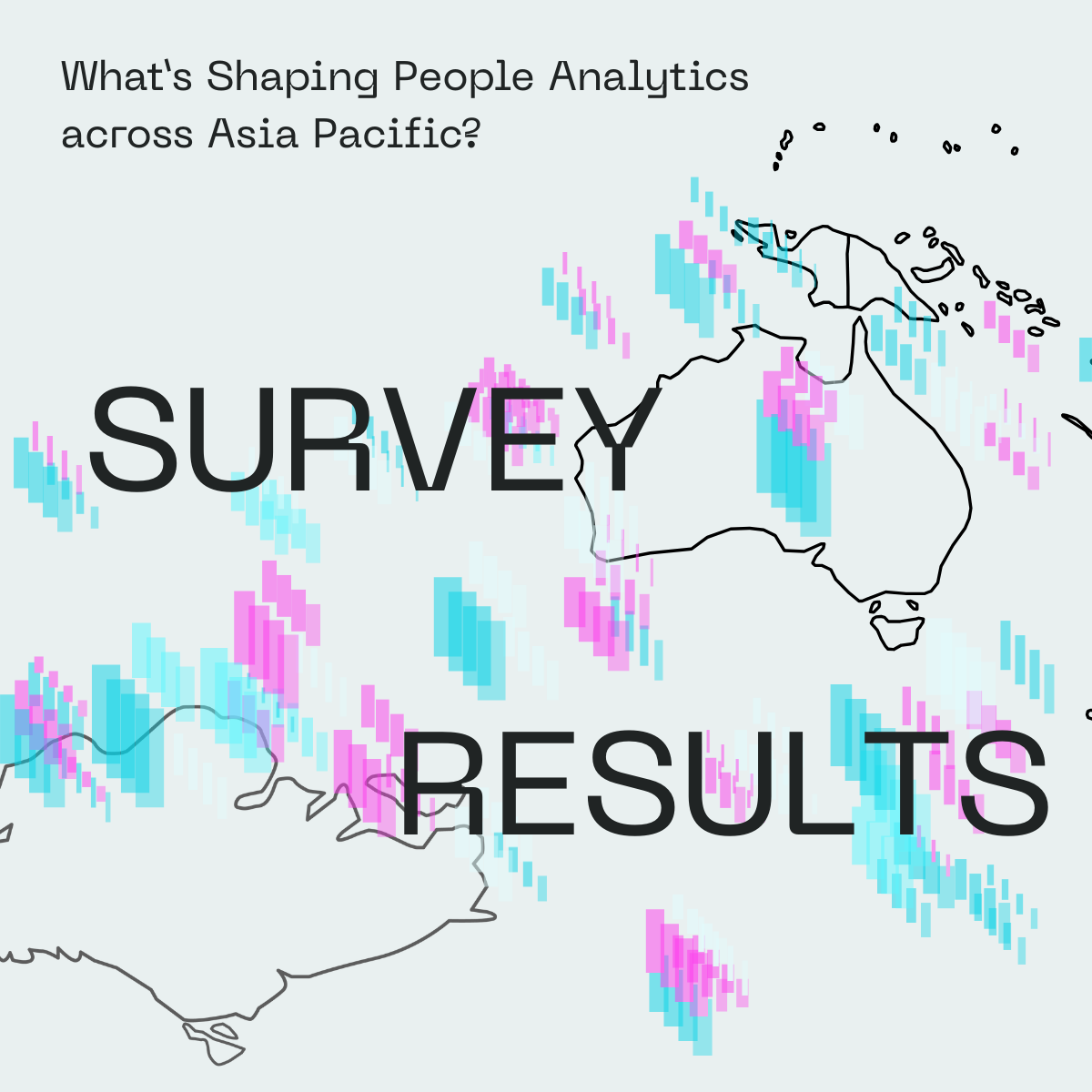We interviewed more than 50 senior HR and People Analytics leaders across Australia, New Zealand, and Singapore to understand what’s working, what’s not, and where teams are headed next. Their responses offer a clear-eyed view of the challenges and momentum shaping workforce analytics in 2025.
What’s really driving People Analytics across the Asia-Pacific region, and what’s holding it back?
To find out, we reached out to over 50 senior HR leaders from Australia, New Zealand, and Singapore. These leaders represent a wide cross-section of sectors - from healthcare to aviation, logistics to finance - with 36% of those we spoke to working in large enterprises of over 10,000 people.
We asked them about their teams, their tools, their strategies, and their roadblocks. Their responses give us a grounded view of where HR analytics is heading in 2025, and what’s needed to get there.
HR Tech Investment Is High, But So Are Friction Points
Nearly three-quarters of the HR leaders we interviewed (73%) said their organisation had adopted, changed, or upgraded HR technology in the past 18 months. That’s a clear signal of intent: teams are investing in tools to help them keep pace with change.
Looking ahead, almost half of the leaders (46%) expect their HR technology budgets to increase in the next 12 months. Only a small group (9%) expect to spend less.
But adoption doesn’t automatically lead to effectiveness.
When we asked how well People Analytics tools are being used, most respondents described their approach as “average." They’ve made progress but see plenty of room for improvement. A smaller cohort (20%) told us they either don’t have a solution in place or rarely use the platform they do have.
The Top Challenge: Turning Data into Decisions
So, what’s getting in the way?
We asked the leaders to identify the skills gaps limiting their ability to make data-driven HR decisions. The most common answers:
- General HR data literacy (35%)
- Data storytelling (16%)
- Analytics specialists like data scientists and people analytics professionals (17%)
Many teams already have access to data. The challenge lies in translating that data into clear, trusted insights that decision-makers can act on, without requiring a PhD in statistics.
That’s where tools with strong signal clarity and intuitive outputs play a critical role. And it’s where upskilling HR teams in data interpretation, not just data entry, becomes essential.
Where People Analytics is Adding Value
Despite these barriers, when People Analytics is in play, it’s delivering measurable impact.
The areas where the leaders we reached out to said they saw the most value over the past 12 months include:
- Workforce planning and productivity (29%)
- Employee retention and engagement (22%)
- Diversity, equity & inclusion (11%)
- HR process optimisation (7%)
That value shows up differently in every organisation, but the thread is consistent: when HR has access to the right insight at the right time, they can influence big outcomes.
AI in HR: Interest is Growing, but Caution Remains
We also explored how HR teams are approaching AI tools.
Just under half (47%) have already adopted AI in some form, though for most, usage remains limited. Another 36% are actively considering it. Only a small group (11%) have no plans to explore AI at all.
The enthusiasm is there, but so is the caution. HR teams want AI solutions they can trust - ones that are explainable, ethical, and genuinely helpful in the context of workforce decisions.
This aligns with what we’re seeing more broadly: HR leaders are less interested in black-box algorithms and more focused on visibility, governance, and outcomes.
Build or Buy? Still an Open Question
One other insight worth highlighting: 69% of the leaders said their organisation has at some point considered building an HR analytics platform in-house.
For those weighing that path, the biggest considerations were:
- Cost implications
- Level of customisation required
- Integration with existing systems
It’s a reminder that while packaged analytics platforms offer speed and reliability, the drive for tailored solutions is still strong, especially in large, complex organisations.
Considering your own build vs. buy decision?
Download our whitepaper to explore the true cost, effort, and long-term trade-offs of each approach.
HR leaders in our region are leaning into People Analytics, but many are still looking for clarity, capability, and confidence. The opportunity isn’t just in better tools; it’s in building stronger foundations for data-informed decision making.
HR leaders in Australia, New Zealand, and Singapore are thinking deeply about how to make better use of data. They’re investing in tools. They’re engaging with AI. And they’re asking the right questions about how to build capability - not just systems.
At One Model, we believe the future of HR isn’t about having more data. It’s about having better answers to the questions that matter, delivered in a way that gives teams confidence to act.
If you're navigating similar challenges or looking to unlock more value from your People Analytics efforts, book a demo today. We’d love to explore how One Model can support your team’s journey.
Want a deeper dive into the data?
Download a full Sapient Insights HR Tech report for Australia, New Zealand, and Singapore.



